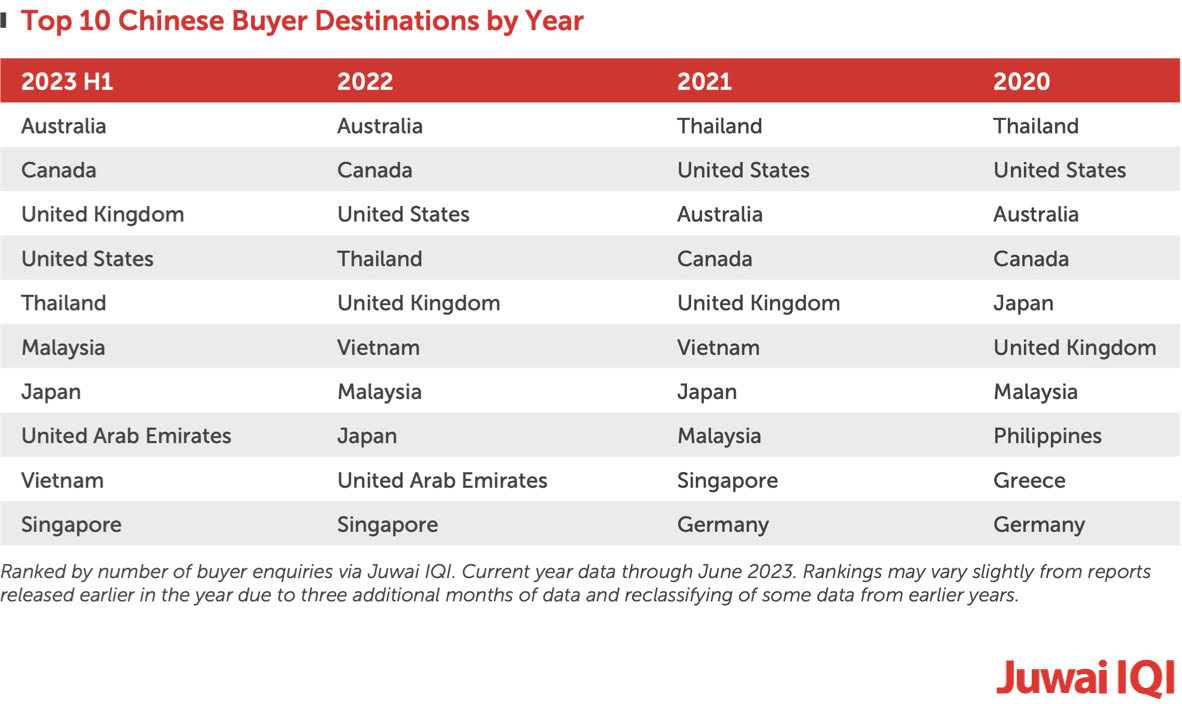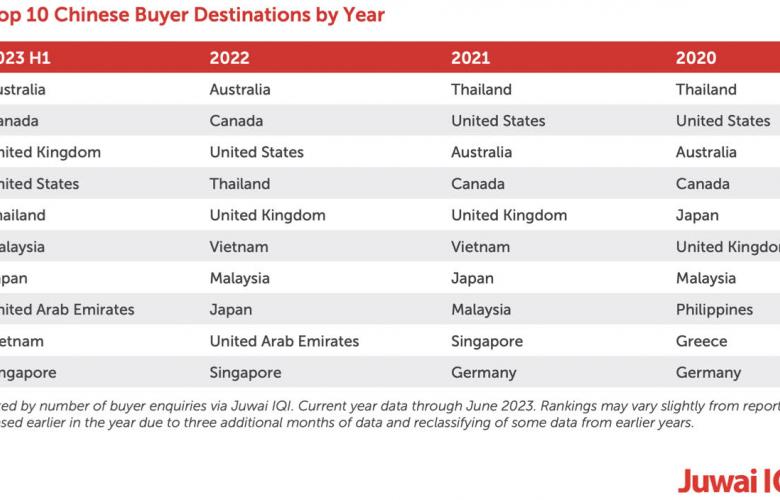Thailand, Malaysia and other Southeast Asian countries make up four of the 10 countries that receive the most Chinese residential investment, and Australia is the top-ranked destination, according to a new report from Juwai IQI. Countries are ranked by the number of buyer enquiries received through Juwai IQI in the first half of 2023.
“Thailand, Malaysia, Vietnam, and Singapore are all in the top 10,” said Juwai IQI Co-Founder and Group CEO Kashif Ansari. “The four most popular countries for Chinese homebuyers are all traditional, wealthy Anglo countries with world-leading educational sectors.
“The only non-Anglo, non-Southeast Asian destinations in the top 10 are Japan and the United Arab Emirates.”
“It is striking is that the U.S. has fallen from its long-time position in the first or second spot to just fourth place,” said Ansari.

“The other big change this year involves Thailand. Due to its lifestyle, proximity and low prices, Thailand was the most popular country worldwide for Chinese buyers year after year until 2021. This year, Thailand is only fifth.”
The company expects Thailand to move up the rankings again as the Chinese international tourism numbers rebound closer to pre-Covid levels.
Chinese outbound travel is recovering more slowly than most expected. Capacity is only around 37% pre-pandemic levels because it is taking longer to make more flights available, which would bring ticket prices down. Also, the uncertain outlook for China’s economy has caused consumers to cut back on expensive indulgences like overseas tourism.
On the other hand, Chinese families have amassed unprecedented savings that are available for purchasing overseas property.
According to official statistics, in the first nine months of 2022 alone, Chinese savings deposits soared in value by RMB 26.3 trillion (US$3.6 trillion).
“Just this week, the Financial Times reported that China’s gross national savings rate of about 45% is more than twice as high as the rates of most similar large economies,” said Ansari.
After three years of closed borders, Chinese are making the most of their opportunities to move overseas. By 2025, 712,000 expats from China will have moved to Australia, Canada, and the United States.
China is the only country that ranks among the top five sources of immigrants to these three destinations, according to a study from the Migration Policy Institute.
Based on China’s share of immigration in recent years, the United States expects 513,000 Chinese will become permanent residents between 2023 and 2025. Australia expects 70,000, and Canada expects 176,000 new Chinese permanent residents.
Chinese also make up the world’s most numerous participants in golden visa programs. Chinese applicants account for 46% of such approved visas in Australia and Greece and 31% in Portugal.
Chinese account for equally large shares of lower-profile citizenship and residency through investment programs. For example, 25% of all golden visas issued by Antigua & Barbuda have gone to Chinese citizens.
Looking forward, even China’s economic growth rates, which are relatively low compared to prior years, will not stem outward property investment. China’s weak property market is encouraging buyers to look overseas.
The country is still adding more households to the upper-middle and high-income classes than any other, according to a recent report from EY. The consultancy expects China to create another 71 million such households — for a total of 209 million — by 2025.
Chinese demand for international real estate will also increase proportionately.











